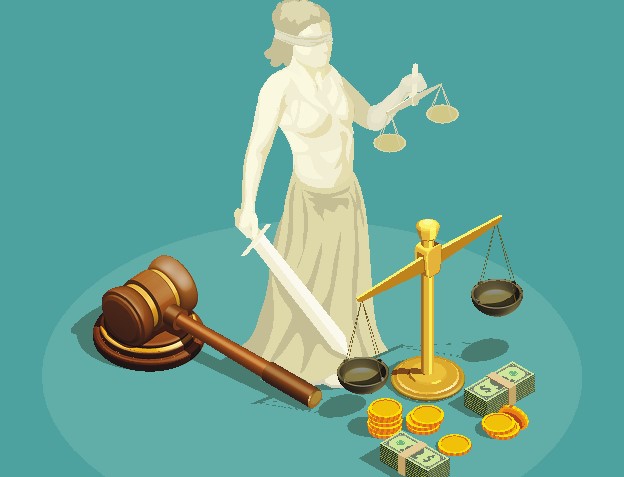
Grades 9-12

Don't have an account yet? Sign up for free
Don't have an account yet? Sign up for free


How do you make wise decisions about posting on social media? In this lesson, students will learn how to differentiate between good and poor social media posts and understand the opportunity costs of their decisions in the present and for the future. They will learn about cybersecurity and the measures to take to avoid negative consequences.
ESSENTIAL QUESTION: What effects can social media posts have on your future?
TIME REQUIRED: 60 minutes
What is cybersecurity? According to Merriam-Webster, cybersecurity is “measures taken to protect a computer or computer system (as the internet) against unauthorized access or attack”.
Students need to learn that the information they post on their social media accounts can affect their reputations, education and career prospects. Today, students are on social media an average of 110 times per day checking TikTok, Instagram, Twitter(X), and Snapchat. They are posting pictures and words that will live forever in cyberspace. Even though some social media sites boast that their pictures will disappear, cyber forensic and screen shots can reveal “hidden” posts. Today’s teens need to think about the future and what the opportunity costs of their posts will be for future employment, relationships and personal goals.
In a Kaplan Test Prep https://www.kaptest.com/blog/press/2017/02/10/kaplan-test-prep-survey-college-admissions-officers-say-social-media-increasingly-affects-applicants-chances/ of more than 350 college admissions officers in the U.S., 35 percent of officers polled reported having looked at applicants’ social media accounts to learn more about them.
Colleges and employers are looking for reckless behavior, pictures or posts depicting the use of alcohol or drugs, excessive partying, vulgarity, nudity, and other risky behaviors. The earlier children understand this, the better equipped they are to avoid posting inappropriate pictures, texts, and videos.
This lesson will educate students about making good choices when it comes to posting on social media by analyzing the short-term and long-term costs and benefits of their posts. Please note: We recommend sending the provided Parent Letter (Handout 2.1) out prior to starting this lesson.
1. Ask students “What effects can social media posts have on your future?” [Answers may vary but should include responses that include benefits and costs of their posts.] Ask the students to record their responses individually and then share as a large group.
2. Record their responses on a whiteboard in front of the group by making a T-chart with “benefits” on one side and “costs” on the other. Put their responses under the appropriate column as they share.
3. Tell the students that this lesson will discuss some new vocabulary words. Introduce new vocabulary to students:
a. Cybersecurity: measures taken to protect a computer or computer system (as the internet) against unauthorized access or attack
b. Opportunity Cost: the next best alternative you give up when making a decision
c. Benefits: something that promotes well-being
d. Costs: what you give up or sacrifice to obtain something
4. Ask the students the following:
a. In a recent survey, the most popular global social networking sites were Facebook, YouTube, Instagram, TikTok, and WeChat, and WhatApp. (Source: Forbes ). What social media sites do you use? Do they differ from the sites in the survey?” [Answers could include Facebook, Snapchat, Twitter(X), Instagram and others.]
b. What are some examples of posts you have made or seen on the sites you visit? [Answers could include pictures, announcements, arguments, political posts, or parties.]
c. What kinds of pictures might be hurtful to someone? [Answers could include harassing, threatening, embarrassing, insulting, nude or mean-spirited pictures or images.]
d. What kinds of pictures might be helpful? [Answers could include appropriate pictures with sports teams, school clubs, or family vacations.]
e. How can you protect yourself when using social media? [Answers could include to never give your password out to friends, only post pictures that are appropriate, don’t participate in cyberbullying, report any inappropriate posts to a trusted adult right away and don’t assume your messages will remain private or hidden.]
5. Pass out Activity 2.1: Student Social Media Video Guide. Explain to students that the questions are in order and they will watch each video as a large group and then discuss. (Alternative Jigsaw Group Activity: You may wish to divide the class into three groups and assign each group a different video to watch. Then, each group can report back to the large group their summaries of their specific video.)
6. [Recommended for 6th graders] Watch Video 1 : Once It’s Out There, You Can’t Take It Back
7. Ask the students the following:
a. What happened in this video? [The toothpaste was squeezed out of the tube and someone tried to put it back into the tube without much success.]
b. How can this be related to posting on social media? [When a decision is made to post a poor choice on social media, it is very difficult (if not impossible) to get rid of it.]
[Recommended for 7th and 8th graders] Assignment 1 – Have students click on a link to a https://press.careerbuilder.com/2017-06-15-Number-of-Employers-Using-Social-Media-to-Screen-Candidates-at-All-Time-High-Finds-Latest-CareerBuilder-Study by Career Builder: Number of Employers Using Social Media to Screen Candidates Has Increased 500 Percent over the Last Decade. Tell students that even though they may be some years away from finding a job, it’s important to understand how employers check social media because what they post will be there when they apply for work.
Ask them to answer these questions on a separate piece of paper:
How many employers check social media as part of exploring the background of job candidates? [60-63%.]
What are they looking for? [Answers vary: many are looking for evidence that supports job requirements, professional portfolio and how a person presents himself/herself online. Others are looking for negatives.]
How many found negative postings? [48%.]
What were some of the negatives? [Racist, sexist or mean comments; provocative photos; inappropriate behavior; person looking angry in photos) What were some positives employers found? (community service; athletic or academic accomplishments; smiling photos.]
Why wouldn’t employers hire someone who shows risky behavior, posts inappropriate pictures on their social media posts, or boasts about fooling someone into doing something? [They can’t trust you to be professional; poor judgment.]
Can you think of anything on your social media now that you would like to delete because of reading about potential employers?
Discuss student answers as a class.
8. Watch Video 2: What can YOU do to protect your online reputation?
9. Ask the students the following:
a. What are the benefits of posting on social media? [You can find out information that benefits you, such as when your favorite artist is coming to town.]
b. What are the costs of posting on social media that negatively affect your online reputation? [Poor choices posted are hard to get rid of. Your decision to post an inappropriate quote or photo can result in people making judgments about you in the short term and long term, such as future employers. This could cost you future job opportunities.]
c. What can you do to enhance your cybersecurity? [Think before you click. Continue to update your privacy settings. Get rid of any friends you do not talk with in person. Protect your password.]
10. Watch Video 3 : Do you really have a private life online?
11. Ask the students the following:
a. What could be a negative opportunity cost of posting an inappropriate picture of a friend or yourself online? Remember, a cost is something you give up or sacrifice to obtain something. A negative opportunity cost is something that could cause hurtful effects with your current life and future goals. [You cannot erase it. People can use it to tease, insult, harass, threaten or gossip about you and/or others.]
b. How can you help protect yourself from negative posts online? [Make sure you know your friends and know the costs (and benefits) of your decisions to post certain photos.]
After watching all videos, remind students that it is very important to weigh the costs and benefits when posting something to social media. As a large group, debrief the lesson by asking the following questions:
1. Encourage students to further explore cyberbullying by answering one or more of the following questions in essay form:
Encourage students to think critically about their responses and include personal examples if they wish. Additionally, share this link with your students to further help them formulate their responses.
2. Assign students to read an article about college admissions officers and social media.
Reading: https://www.kaptest.com/blog/press/2017/02/10/kaplan-test-prep-survey-college-admissions-officers-say-social-media-increasingly-affects-applicants-chances/ College Admissions Officers Say Social Media Increasingly Affects Applicants’ Chances
Have students write a paragraph on the do’s and don’ts of posting on social media for prospective college students and how that affects their behavior now.
Option #1 -Public Service Announcement Posters: Place students into groups of 2-3. Provide them with a blank poster and markers. Instruct them to create a “public service” message of appropriate usage of social media websites aimed to educate 6-8th grade students. They should explicitly state the costs and benefits social media posts will have on their futures and model appropriate posts on them. Once complete, have the students share by doing a short “commercial” of their poster and then hang them up around their school.
Option #2 – Children’s Books: Have students individually create a short children’s book that teaches how to post appropriate posts to social media accounts. Make sure it also includes the concepts of costs, benefits, opportunity cost and decision making (and correct definitions) within the story. Invite a group of 2nd or 3rd graders to your classroom or ask to visit their classroom to share the stories once complete.

Grades 9-12

Grades 9-12

Grades 9-12

Grades 9-12
